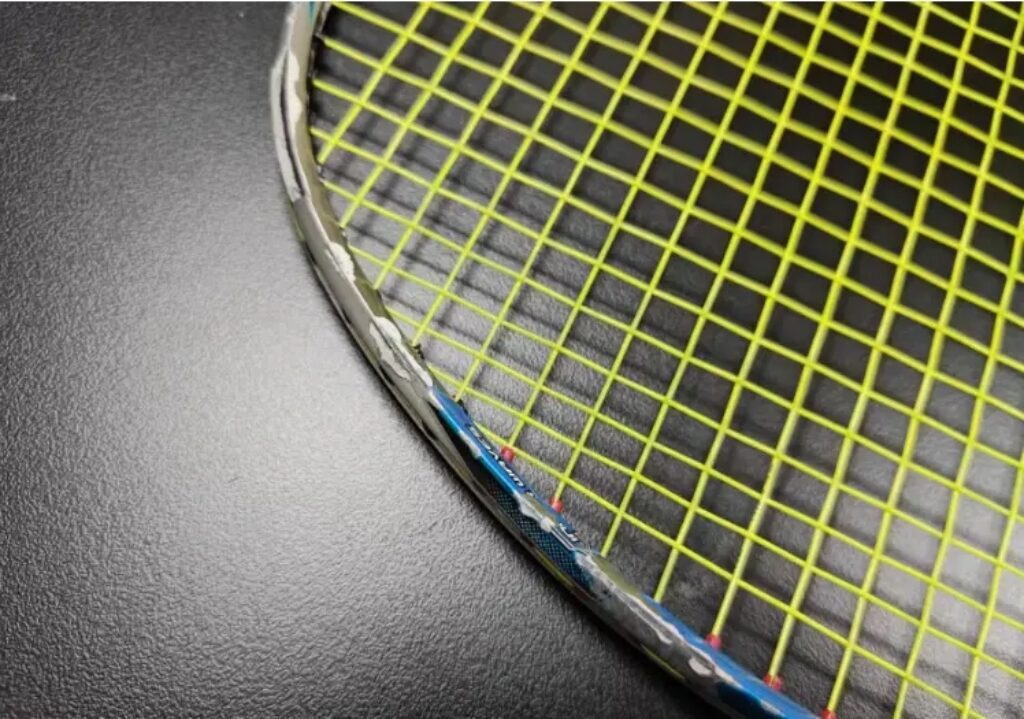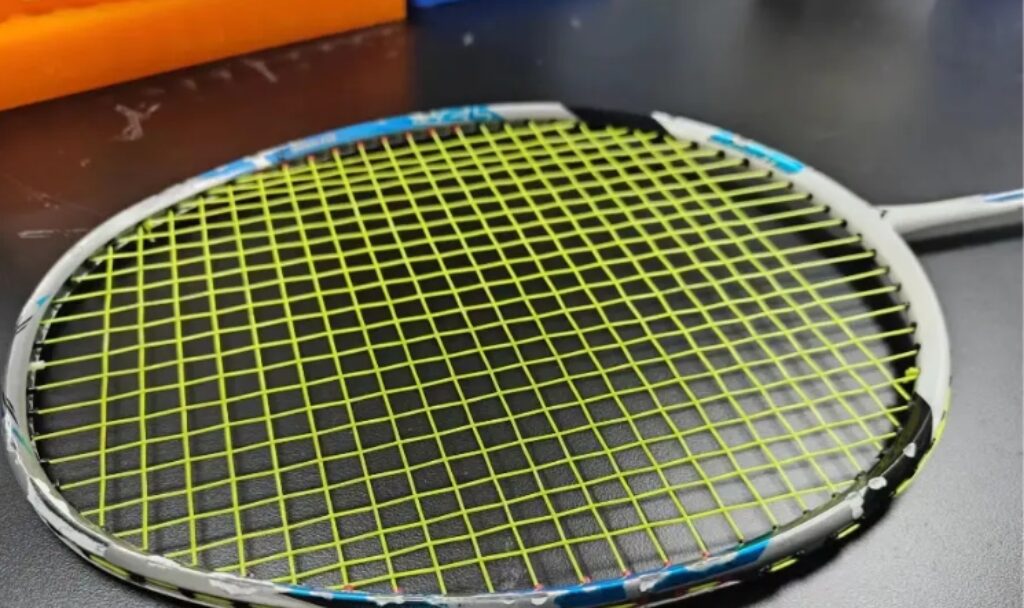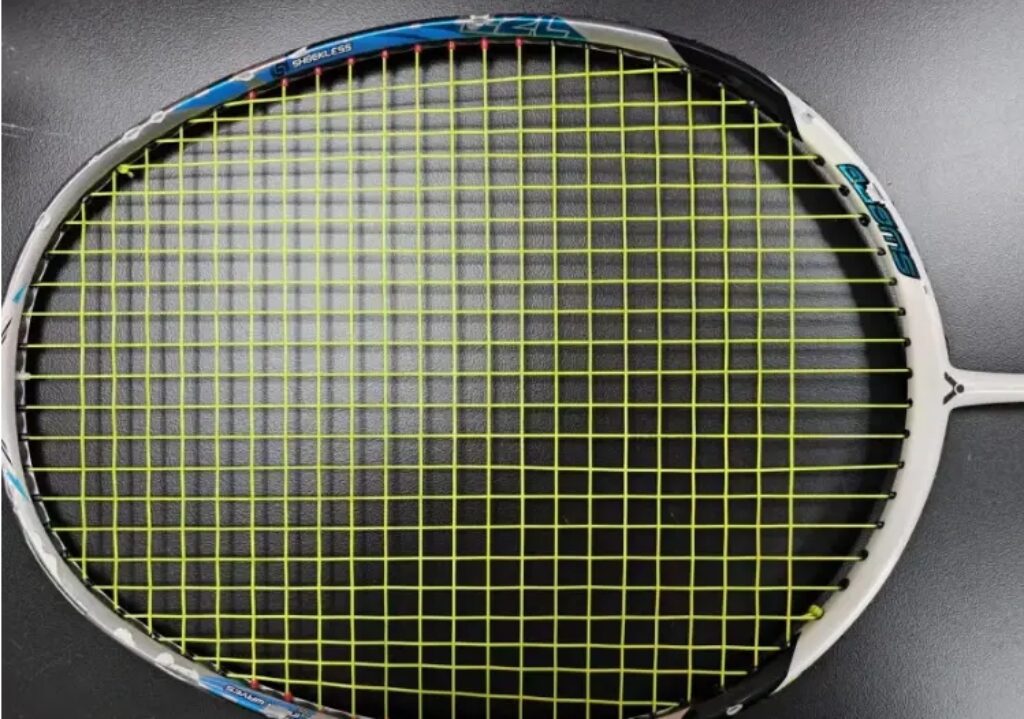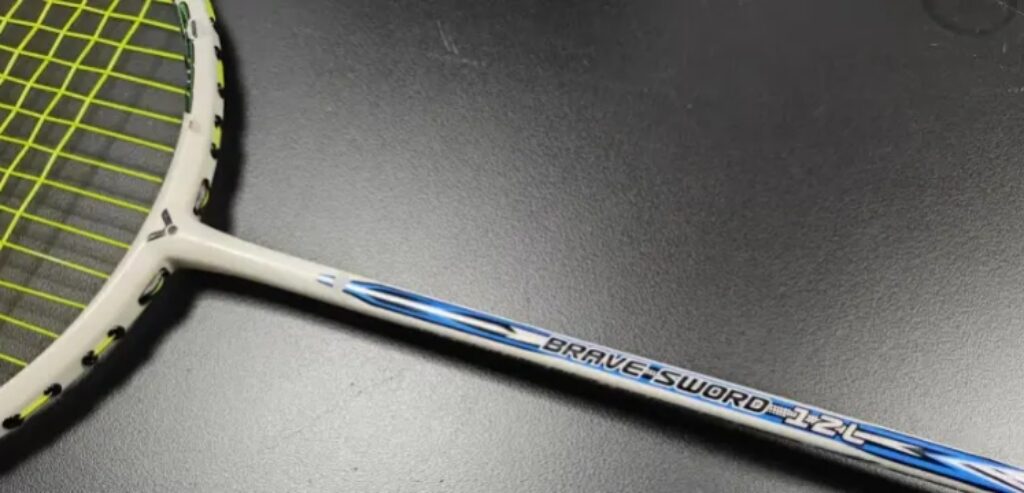Generally, in Victory’s rackets, models with the “L” suffix often have substantial meanings, such as the MX-30L aimed at women, the lightweight TK-15L, and the JetSpeed 05L, which merely indicates a different color. However, as the product range expands, I’m not entirely sure if “L” still signifies a special adjustment in that direction.
At least for the Liangjian 12L, looking at its weight data, I have doubts.
Specifications:
Weight: 3U G5, without grip, total weight in use: 100.70g, balance point: 292mm, shaft length: 216mm, moderate stiffness, diamond-shaped aerodynamic frame, 72-hole string bed, 9-3 o’clock grooves, warranty up to 30 lbs, strung at 25 lbs with NBG95.
Despite the worn-out paint, I can still see its former glory. The silver and white base coat and water blue accents give it a scholarly appearance, making it stand out among the Liangjian series’ standardized designs. It reminds me of the old MX-30L. Upon closer inspection, the blue stickers on the frame at 5 o’clock and the wings feature pearlescent paint. If it weren’t for the Liangjian series’ “flower sword big break” resulting in a damaged aerodynamic part, this would be a very attractive racket.

As a derivative model of the Liangjian 12, it shares the same technologies, such as the inner wave and shock-absorbing pins, which should theoretically make it a more lightweight product. However, both the 3U and 4U specifications and the total weight of up to 100g were unexpected, leading me to question the “L” designation. Nevertheless, the Liangjian 12L is still a light and swift racket. Compared to the 12, its lower balance point makes for a sharper and more agile feel. Additionally, the overall stiffness of the 12L is lower, allowing for greater shaft deformation during powerful shots, making it more forgiving in terms of driving power.

So, what’s the trade-off? Difficulty in controlling the ball. The Liangjian 12 was not renowned for its attacking capability, but its higher stiffness and appropriate swing weight allowed it to perform well in consistent downward shots. This was one reason why many experienced players would return to the 12. With the 12L’s adjusted balance point focusing more on consistency, the change in feel has made the ball trajectory straighter and less sharp, with a slower response. While the 12L can still deliver powerful smashes with a 95 tension string, the confidence in shot placement is somewhat diminished.

I initially thought its net play capabilities would significantly improve, but I found that I had to be more mindful of my power, as I pushed several balls out of bounds when trying to forcefully hit the ball at the net. The transition from other rackets to the 12L made this issue more apparent, leading to frequent mistakes. Most errors at the net, whether hitting out or into the net, were due to over-aggressive movements, exacerbated by the 12L’s tendency to push shots forward.
However, the flat drives and defensive feel are still quite good, confirming the improved agility as previously mentioned.

It’s worth noting that the 12L’s ball feel is somewhat similar to the Liangjian 15, with the ball staying on the string bed slightly longer, which boosts confidence in backcourt drops and net play, enhancing its tolerance.
Other aspects, including the feedback and feel, don’t show significant differences from the 12. For details not covered here, refer to previous reviews for a comparison. Overall, the Liangjian 12L is a more agile and user-friendly version of the 12. While its reputation and circulation are less compared to the 12, its playability is noteworthy. The problem with downward shot performance and the poor paint quality contribute to a significant depreciation in the second-hand market, making it another loss for me.


Leave a Reply